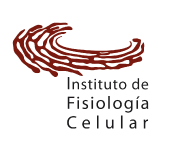Transient receptor potential vanilloid (TRPV) channels comprise a protein subfamily with six members (TRPV1–TRPV6). This subfamily of ion channels was named after TRPV1, the first cloned member and a receptor that responds to the pungent vanilloid capsaicin and many other stimuli. These channels are found in several tissues and organs where they play important roles in physiology. These proteins exhibit polymodal responses as they can be activated by diverse stimuli. For example, they function as hygro- and mechanosensors in insects; chemical and mechanical sensors in nematodes; and temperature, chemical and osmotic sensors in mammals. Functional TRPV channels form tetramers composed of subunits with six transmembrane domains (S1–S6) and with intracellular N- and C-termini, displaying cation selectivity. TRPV channels are not only activated by several stimuli, but their activity is also regulated by several biological processes, which include phosphorylation, alternative splicing, binding of accessory proteins, etc. Due to their importance in physiology, several TRPV channels have become the target for therapies directed toward controlling pain, inflammation, itch and other pathologies. In the last decade, we have witnessed an explosion of information regarding the three-dimensional (3D) structures of TRPV channels, allowing us to better understand what these channels look like and how they function at the molecular level.
ABSTRACT


